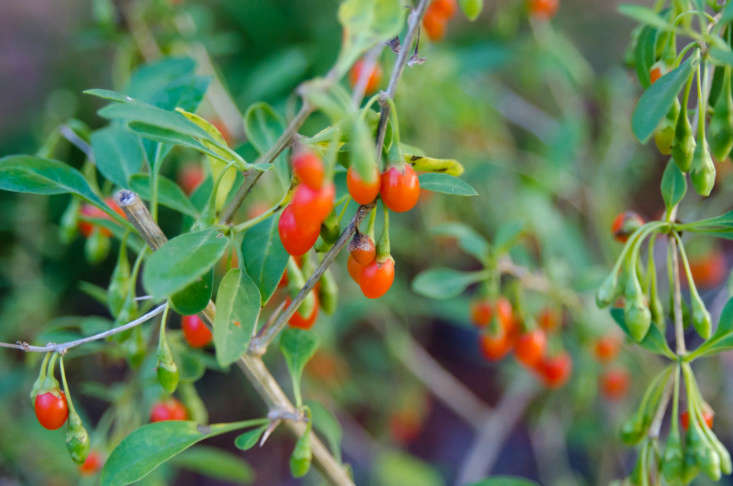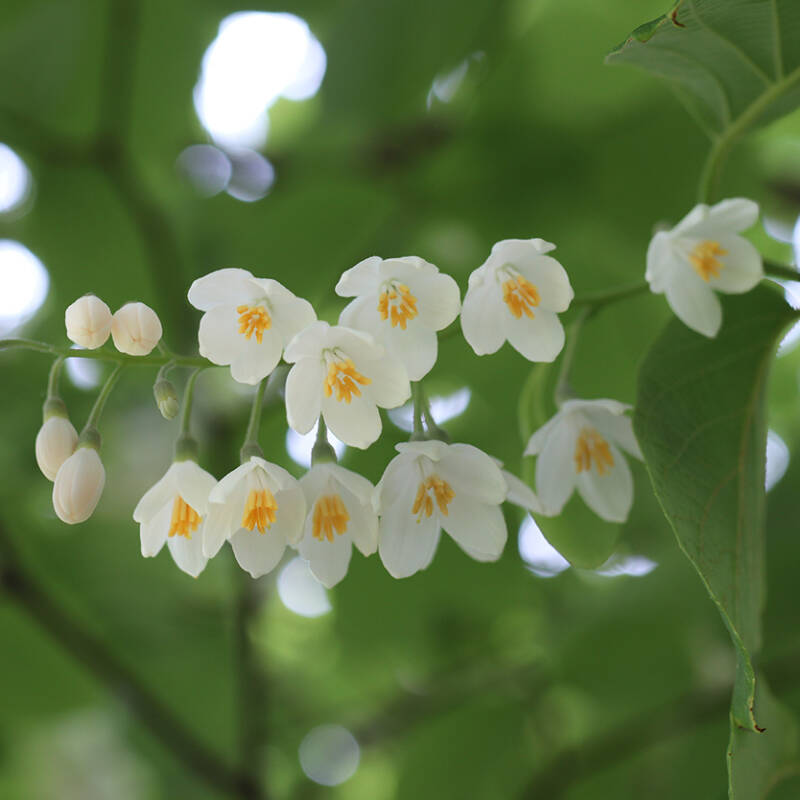Put “super” in front of a word, and immediately attention and importance is drawn: think superhero and Super Bowl. Now put the word next to something edible and you have a trend, like with “superfoods” and now “superfruits.” Generally speaking, I think all fruits are superior to many foods, but now nutrition scientists have deemed some varieties to be more packed with vitamins, minerals, fiber, and antioxidants than others, or they have some unique nutrient we don’t typically get in our diets. This category of fruits is now elevated to super status.
Below, five must-know, must-eat, and must-grow superfruits: Plant these fruity powerhouses in your garden and reap all the healthy rewards (cape not required).
Aronia

Coming in on top for ease of growing, but also for being somewhat unknown, is Aronia. This berry is commonly called chokeberry—I know, not so appealing—because of its puckery-tart taste when eaten raw. This only means you might want to turn your bounty of berries into a jam or jelly. And why is Aronia super? With its rich dark colored skin, this berry is mega-high in vitamin C and has so many antioxidants (especially anthocyanins, due to its black color) that it outperforms the notable blueberry for being immune-boosting and cancer-fighting. Both cold- and heat-tolerant, aronia can be grown in USDA Zones 3-8 in full to part sun in slightly acidic, constantly moist soil (it especially thrives in flood-prone areas). Also, Aronia can grow to 8 feet tall and as wide but needs little pruning to maintain fruit production.
Blueberry

Blueberries were one of the first fruits to be called a superfruit because of their diverse anthocyanins, polyphenols, and phytonutrients. Most people by now know they top the healthy fruit charts, but did you know there are so many varieties to choose from? You can choose early-, mid-, or late-fruiting, evergreen or deciduous ones, and find others that fit your winter conditions (some need cold winters to set fruit). Blueberries, in general, require little care but they do like sun to part sun, acidic soil, and to be mulched and have their root zone moist during the growing season. Blueberries also make great container plants. See Gardening 101: Blueberries for everything you need to know.
Kiwi

Kiwis are definitely a fruit with an acquired taste. My son says they taste like toothpaste (I, umm…agree). Loaded with vitamin C and K and prebiotics (especially if the skin is eaten) and even soluble enzymes, this fuzzy superfruit comes in many more shapes, sizes and colors than the typical one found in stores. The best way to enjoy kiwis is to grow your own and allow them to ripen at room temperature. Fuzzy kiwis prefer full sun to produce fruit but the Arctic Beauty, Silver Vine, and Hardy kiwis tolerate more shade. All kiwis like well-draining soil and while most are suited to areas with moderate winters (Zones 8 and 9), some varieties are even cold hardy down to Zones 3 and 2. Be aware that kiwi vines grow large and require a lot of space so consider growing them over a sturdy arbor or fence. Also, in order to get fruit, you need a male and female plant—unless you grow the variety ‘Issai’—because most kiwis do not self-pollinate. Plant your couple at least 10 feet apart.
Goji

Goji berries, also called wolfberries, have gained in superfruit popularity because of their small, orange-red, slightly sour fruit (like cranberries) that reportedly are bursting with immune-supporting vitamin A , C and numerous antioxidants and amino acids. Goji plants are easy to grow at home and you can harvest over a long season, plus some varieties can reach a height of 10 feet if left unpruned so you might only need one bush. Plant your goji in zones 3-10 in full sun and keep the soil moist. This berry also makes a good container plant because its size will be more compact and its roots will not spread willy nilly; just make sure it is a large container. Do know that this deciduous shrub is considered invasive, though, if left unattended in places like Oregon.
Honeyberry

Another lesser-known power fruit is honeyberry. When fully ripe, the elongated blue fruits taste like a mixed-berry pie and are considered highly nutritional because of their high vitamin C, Quercetin, and antioxidant content. Surprisingly, honeyberry is so frost-tolerant it can take cold down to -40F making it one of the most cold-hardy superfruits you can grow. Plant your bush in a partly sunny location, with morning sun being the best, and expect it to grow from 3 to 8 feet tall. For maximum fruit production, plant two compatible varieties, and then for optimal taste wait for the fruit to be blue inside before harvesting. Oh, and birds love honeyberries, too, so plan to use some sort of protective covering if you don’t like sharing.
For more on fruits, see:
- Edible Gardens: Black Raspberries, America’s Lost Fruit
- Gardening 101: Alpine Strawberries
- 14 Things Nobody Tells You About Indoor Citrus Trees









Have a Question or Comment About This Post?
Join the conversation